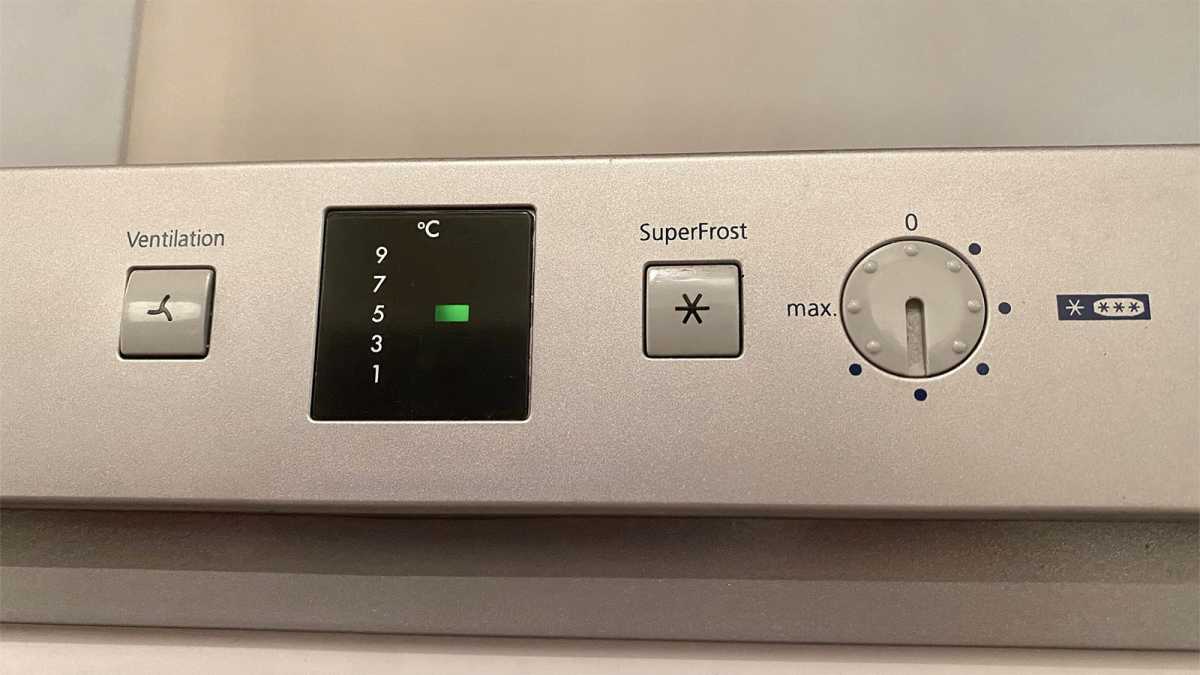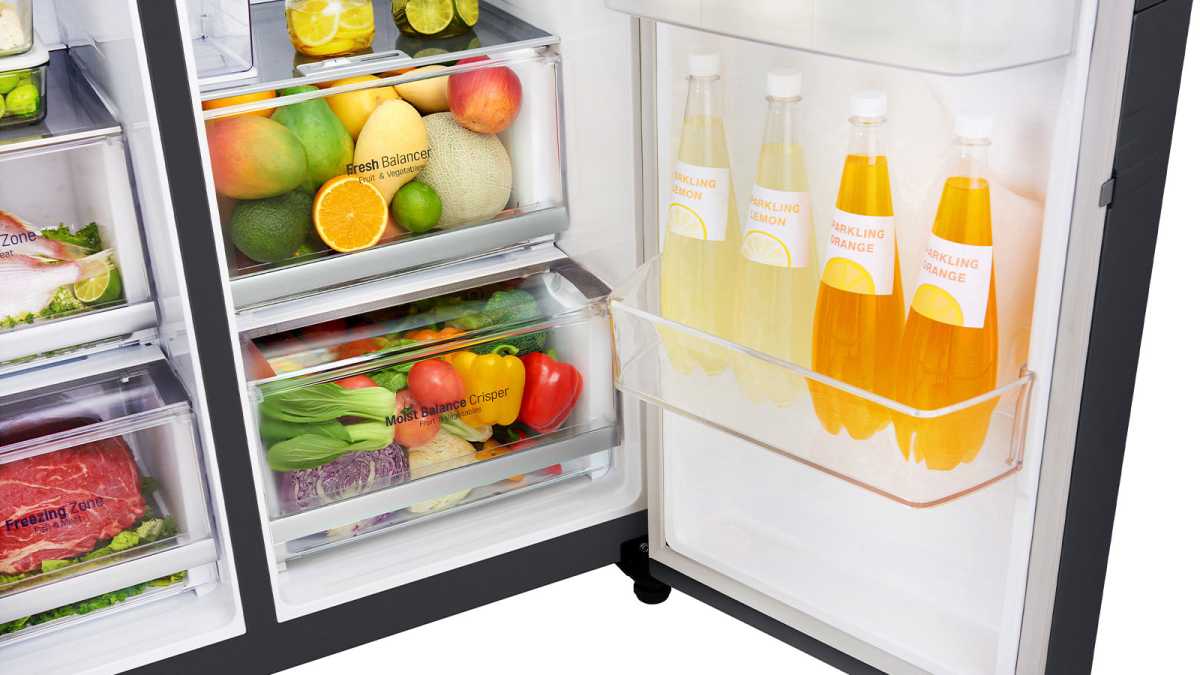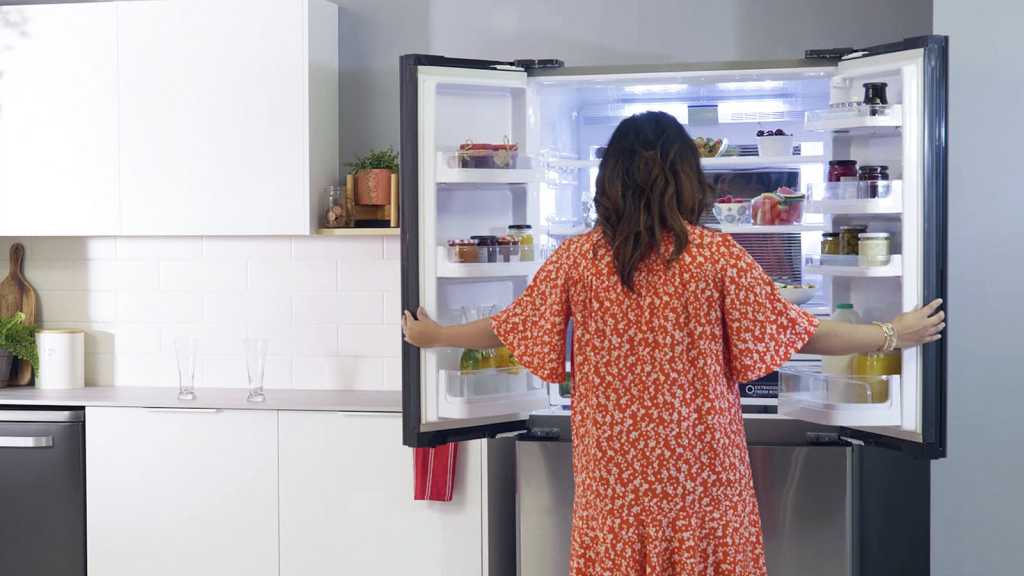If you’ve noticed that your food isn’t lasting as long over summer, there are some things you can do to make sure your fridge is running as well as possible. Give these tips a try to keep your refrigerated food fresher for longer and minimise food waste.
What temperature should your fridge be?
Experts, including AO.com‘s fridge specialist Amanda Lorenzini, say that a fridge’s ideal temperature should be between 3°C and 5°C (37°F-40°F).
Inside your fridge or freezer, you should be able to see a temperature gauge. If you can’t spot it, or you’re worried that it’s not accurate, you can buy a fridge thermometer for a fiver from Amazon.
Newer fridges may let you press a button to choose a target temperature. But in older models, you might find that, next to your temperature display, you have a numbered dial. This probably won’t show temperature. Instead, it displays a cooling setting, usually from 0-5. That means that you’ll need to choose a higher setting to get a lower temperature.

Emma Rowley / Foundry
If you’re worried that your fridge is too warm, trying turning the dial up by one increment. It could take up to 24 hours for the fridge to reach your chosen temperature, so leave it alone for a day and then check the temperature again.
Check and fix your door seal
As your fridge gets older, the door seal can become less effective. The hip bump or door slam that used to close it firmly may no longer do the job. If you’ve walked into the kitchen recently to find the door ajar, or if you’re worried that it’s leaking cold air, here’s what to do.
First off, an obvious point: make sure that there are no food items too near the front of the shelves. Even if everything seems to fit in, there may be a bottle or a carton in the door that’s hitting something inside and stopping the fridge door from closing properly.
Once you’ve rearranged things (just to be sure), the next thing to do is check the door seal.
To see if the rubber door seal – also known as the gasket – is at fault, try the paper test.
Place a piece of paper in the seal and close the door firmly. If you can pull the paper out without the door seal tugging it at, that’s a sign that the seal is compromised.
If that’s the problem, there are some easy tricks you can try to fix it.
First off, get a sponge or cloth and a bowl of hot water. You can add a drop or two of washing-up liquid to the water but don’t add loads and let it foam up too much as it can dry out the seal. Don’t use any other cleaners on the gasket – especially not vinegar – as they can damage the rubber and make the problem worse.
Gently clean all over the door seal, wiping away any stains or crumbs.
When it’s perfectly clean, move on to the next step.
You’ll notice that the door seal has folds, like a concertina. Over time, they can become compressed, which will make the seal less efficient. Carefully run a finger along the length of each fold and open it up. If there are warped areas, you may be able to press them back into place.
Last stage! If you notice that the rubber has dried up and become brittle, there’s something else you can try.
If you have some Vaseline, you can take a cloth, scoop up some Vaseline and rub it into the gasket. This will soften it and help it to form an effective seal again.
If the gasket is too warped to push back into place, or it has large cracks, you’ll need to replace it. In most cases, you’ll be able to buy a replacement seal for your door and fit it yourself. Find your fridge make and model and look for a replacement gasket online.
Stock your fridge correctly
First off, make sure that everything in your fridge is stored in the right spot. The crisper drawers at the bottom of the fridge are the right spot to keep your fruit and vegetables. They’ll have the best humidity conditions for these items. If your fresh produce isn’t lasting as long as it should, it’s probably a sign that your fridge isn’t cold enough.

LG
If your milk tends to go off before you can use it all, move it out of the fridge door into the main compartment and store canned drinks, jars and water there instead.
You’ll also want to make sure that your fridge is kept properly stocked all month. The aim is to try to help your fridge remain at the same temperature all the time.
This can be difficult as the fridge tends to be at its most packed just after shopping, with food levels dwindling over the week or month until you re-stock. Your fridge will then have to work much harder when you re-stock and, over time, will wear it out faster.
Newer fridges, like the Whirlpool W Collection French door fridge freezer, will have a specific temperature setting to give a cold air boost when you’ve just put away a big shop. But the rest of us may have to turn up the dial for a day, or just try to retain an even temperature inside throughout the month.
A good rule of thumb is to try to keep your fridge about 80% full. Make sure that items are spaced evenly enough to allow cold air to circulate between them and don’t try to cram in too much food. As you use up produce, replace it with bottles of water.
If you want to store just-cooked food in the fridge, cover your dish and leave it on the counter to cool until it reaches room temperature. Then put it into a sealed container in the fridge.
Keep the door closed
Finally, don’t leave the fridge door open for too long when you’re deciding what to eat. Food browsers will enjoy LG’s Instaview fridges, which have a special, snack friendly window that lets you mull over options and then grab a snack or drink without having to open the main fridge door.
But the best money-saving option for most of us is to decide what we want before opening the door.
Finally, if you think your fridge is on its last legs and you need to replace it, check out our round-up of the best fridges and fridge freezers we’ve tested. We’ve reviewed brilliant fridges for all budgets.
